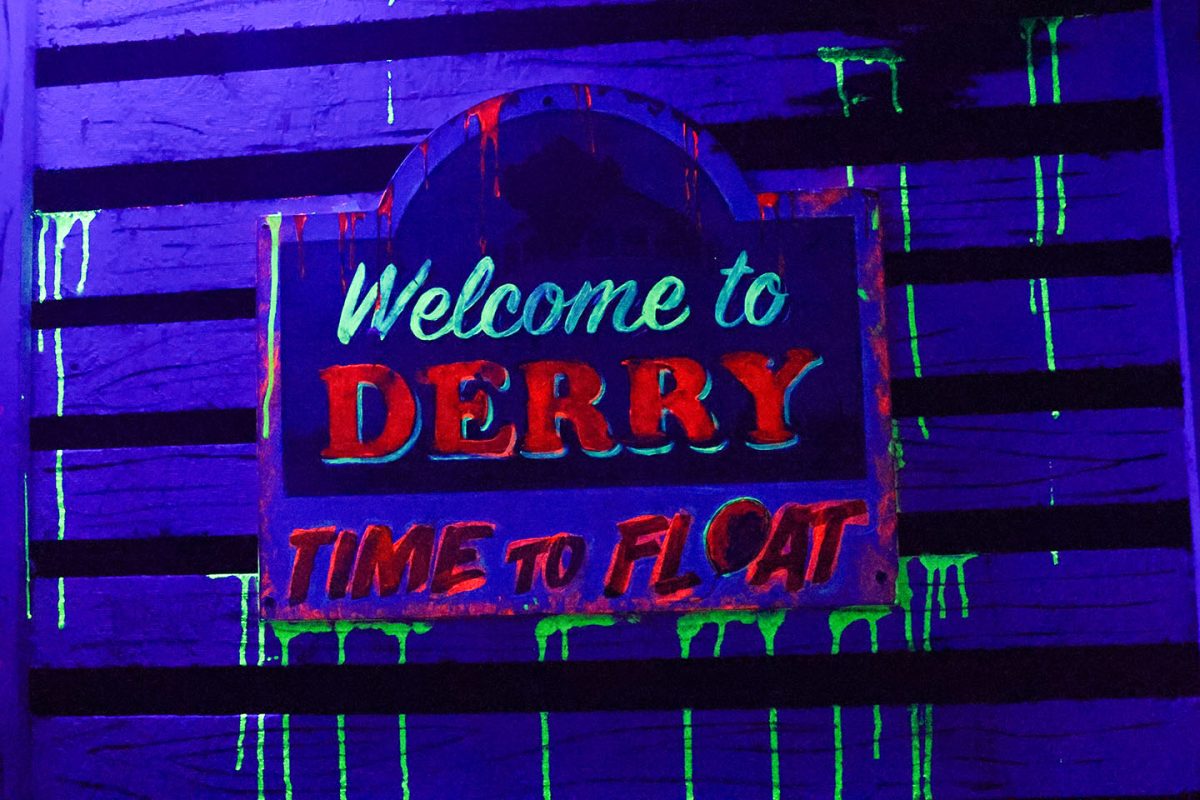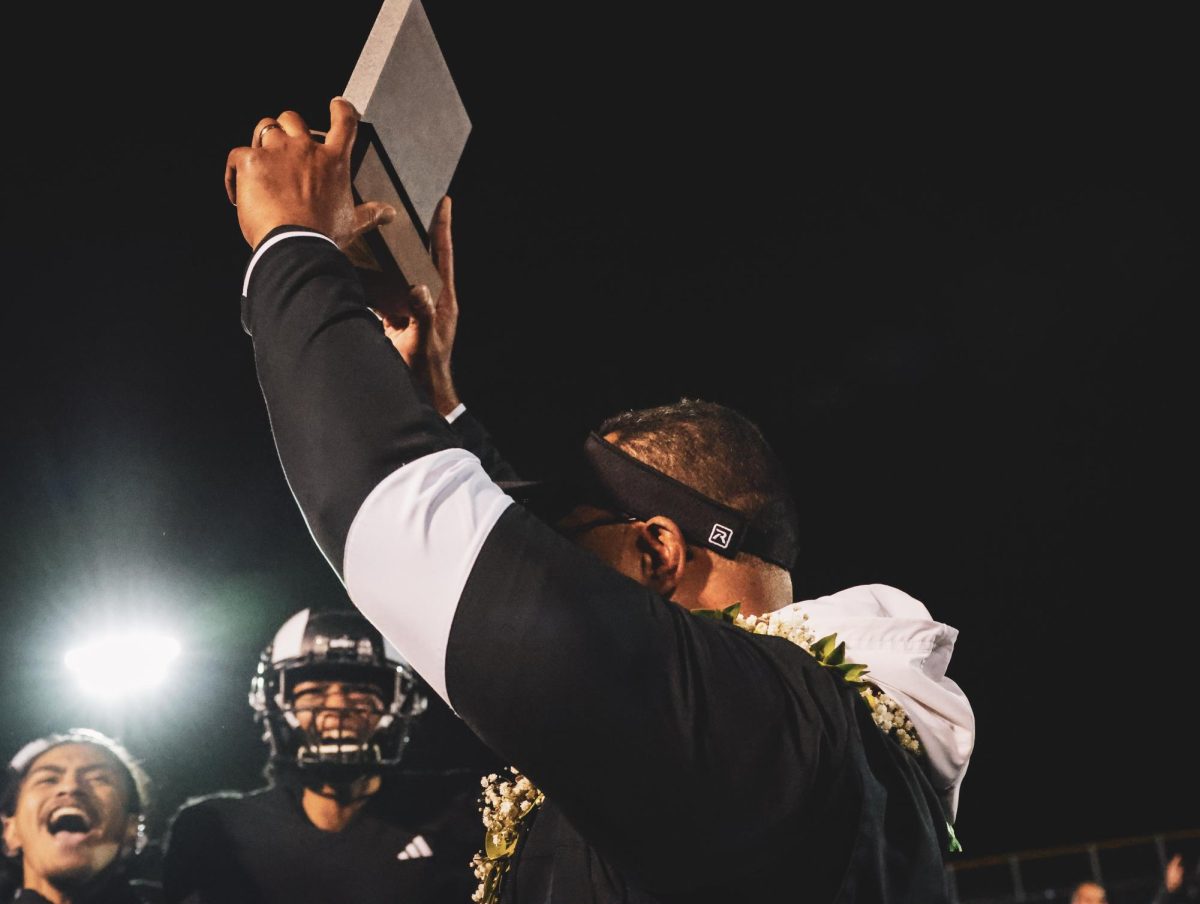A Bloody Disaster
December 9, 2014
I couldn’t believe that this content was what so many millions of Americans watched with fervor–the grotesque image from AMC’s The Walking Dead of a dehumanized, bloodied head, attached to what, now sickly transformed, was a human body.
I couldn’t make it past a still motif of a zombie, let alone an actual episode of the graphic series. As someone for whom violence is seldom viewed, I am unfamiliar with its allure.
For freshman Harvey Nexhip, the familiar scenario of a crazed killer came to mind when he described his observations on violence affecting human behavior.
“Most of the guys that go insane and kill people, it’s mostly because they’ve been exposed to it [violence] for a while, and so they think it’s okay, and just… go nuts, I guess,” Nexhip says.
But according to University of Utah psychologist Cassie Power, there are so many factors that come into play when considering human behavior, too many to draw direct parallels between crime and violence. The way that the relationship between crime and violence is determined is through correlational and experimental research.
According to Power, “Correlational research looks at whether there are two variables that vary together.” She adds, “You want to be careful about drawing causal conclusions from correlational research, so it’s not to say that just because two variables vary together that one causes the other… In order to determine a cause-effect relationship, then you need to have experiments.”
Therefore, we cannot immediately say that a rise in violent media equals a rise in violent crime. To test how media influences aggression, test subjects will be given a button that when pressed, will make a loud noise, which by leveling at an opponent, acts as an ethical alternative to aggression. This type of aggression, pressing a button that makes loud noises at someone, may not result in legitimate violence in the real world, but is used in testing. The truth is that no matter the environment, a person brings innate qualities with them, such as personality traits, that affect their overall behavior in any given environment.
We, as humans, possess these personal qualities and at the same time interact with our environment.
“All human behavior is complicated, and is going to be determined by multiple, multiple factors,” Power says. Even the type of behavior in people that violent media promotes may not be explicitly violent.
What this content does, however, is to decrease an individual’s ability to feel what another person is feeling, such as being able to feel pity or sorrow for that person.
“Most of the time, people are looking at increases in aggression, but it can also lead to decreases in pro-social behavior as well,” Power says. A decrease in pro-social behavior refers to, bluntly speaking, people becoming less nice.
“If lots of exposure to violent media affects my ability to empathize with you, and I see you fall down outside and scrape your knee, I may not have been the one to push you down, but I maybe wouldn’t feel as sad about what happened to you and I may just keep walking on,” was the example that Power gave.
Even if human behavior doesn’t become drastically more violent, it could decrease in positivity. We as humans transform in a most chilling fashion when it comes to being exposed to violent media. No, we may not always turn to aggression, but we may stop caring about human suffering altogether when it happens. Adults who have the potential of perpetrating violence are not the only ones who display the side effects of viewing violent media; children are at the top of psychologists’ charts when it comes to feeling these effects.
“It doesn’t matter if it’s violence or not, you don’t really think about it,” Nexhip says. “I wouldn’t expose my kid to violence that young. He would think it’s okay, so he would probably not have a really good sense of what’s right, what’s not.”
Morals aren’t the only worry when it comes to children and violence. A child’s brain is not fully developed, so any impression can have long-lasting effects if made on a vulnerable mind. Power tells of the consequences that have been proven when children view aggressive content in the media.
“What some of the research with children looks at, does exposure to violent media desensitize them to those kind of things, and it does. What is actually does, is it desensitizes children, and children actually become less concerned about other people’s suffering when they see it in person,” Power says.
There is no doubt of the possibility of next generation being less compassionate than the last. After all, what children are watching nowadays is a far cry from television shows that used to be broadcasted. Modern-day shows such as The Walking Dead, Grey’s Anatomy, and Game of Thrones cannot compare with shows like Gilligan’s Island and Bewitched, from fifty years ago, that carry virtually no explicit content, which, according to Power, reduces empathy in children.
Why let violence seep into the media, and, essentially, all corners of everyday life? If gore and aggression present a conflict when it comes to making humans act like humans, why allow them? We are only becoming more unfeeling towards the suffering of others by watching it in a way that allows us to be emotionally detached. Video games include violence, but they are just games. How are we able to be entertained by violence when it is virtual, but cringe at it when it occurs before our eyes?
As it has been observed, we are becoming less likely to cringe at violence now that it plays out in front of us constantly, and in doing so, we are never given the emotional aspect of witnessing something so graphic. Think about a video game, where you know that the images on-screen are just simulations. Now imagine what it would be like to have a violent act preformed in front of you, in the blood.
“It’s all got to do with emotions, emotions in video games,” Nexhip says. “If you’re like, oh, this is just a stupid game, I can do whatever I want, that’s fine. But in real life, when you actually hurt someone or something happens, you can actually see that it affects people, you can see how bad it really is. You kind of rethink it, and I guess that the difference between those two would be one’s got real emotions, the other, the video game, it’s just, do whatever you want.”
Before allowing ourselves to be swept up in this violently-charged world of ours, we must reconsider. A child is still a child, and is often incapable of telling right from wrong. If, from a young age, a child is fed aggression by the world as it is now, when that child reaches adulthood, he or she would have never learned the values of what it is to be human.
We, as a society, are desensitizing ourselves into feeling no pain or remorse for human suffering, and unless each and every one of us is able to reanalyze violence, the cycle will never stop. It will only become that bloodshed and hostility are the norms, regret, mercy, compassion, and humanity being of the old.





























